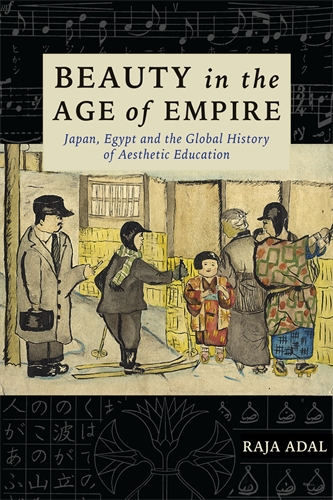Beauty in the Age of Empire
When modern primary schools were first founded in Japan and Egypt in the 1870s, they did not teach art. Yet by the middle of the twentieth century, art education was a permanent part of Japanese and Egyptian primary schooling. Both countries taught music and drawing, and wartime Japan also taught calligraphy. Why did art education become a core feature of schooling in societies as distant as Japan and Egypt, and how is aesthetics entangled with nationalism, colonialism, and empire?
Beauty in the Age of Empire is a global history of aesthetic education focused on how Western practices were adopted, transformed, and repurposed in Egypt and Japan. Raja Adal uncovers the emergence of aesthetic education in modern schools and its role in making a broad spectrum of ideologies from fascism to humanism attractive. With aesthetics, educators sought to enchant children with sounds and sights, using their ears and eyes to make ideologies into objects of desire. Spanning multiple languages and continents, and engaging with the histories of nationalism, art, education, and transnational exchanges, Beauty in the Age of Empire offers a strikingly original account of the rise of aesthetics in modern schools and the modern world. It shows that, while aesthetics is important to all societies, it was all the more important for those countries on the receiving end of Western expansion, which could not claim to be wealthier or more powerful than Western empires, only more beautiful.
Beauty in the Age of Empire is a global history of aesthetic education focused on how Western practices were adopted, transformed, and repurposed in Egypt and Japan. Raja Adal uncovers the emergence of aesthetic education in modern schools and its role in making a broad spectrum of ideologies from fascism to humanism attractive. With aesthetics, educators sought to enchant children with sounds and sights, using their ears and eyes to make ideologies into objects of desire. Spanning multiple languages and continents, and engaging with the histories of nationalism, art, education, and transnational exchanges, Beauty in the Age of Empire offers a strikingly original account of the rise of aesthetics in modern schools and the modern world. It shows that, while aesthetics is important to all societies, it was all the more important for those countries on the receiving end of Western expansion, which could not claim to be wealthier or more powerful than Western empires, only more beautiful.

Publisher
Columbia University Press
ISBN
9780231191166
Published
2019
Specialisation
Social Sciences
Theme
Art and Culture
History
Education
Region
Global Asia (Asia and other parts of the World)